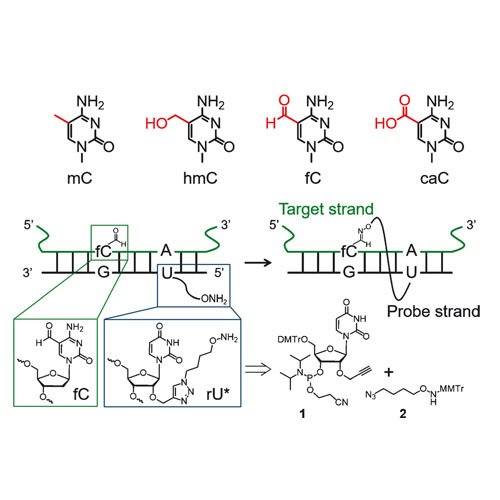5-Formylcytosine Could Be a Semipermanent Base in Specific Genome Sites
25-Aug-2016
Angew. Chem. Int. Ed., Volume 55, Issue 39, Pages 11797–11800, DOI: 10.1002/anie.201605994
Angew. Chem. Int. Ed, online article
5-Formyl-2′-deoxycytosine (fdC) is a recently discovered epigenetic base in the genome of stem cells, with yet unknown functions. Sequencing data show that the base is enriched in CpG islands of promoters and hence likely involved in the regulation of transcription during cellular differentiation. fdC is known to be recognized and excised by the enzyme thymine-DNA-glycosylase (Tdg). As such, fdC is believed to function as an intermediate during active demethylation. In order to understand the function of the new epigenetic base fdC, it is important to analyze its formation and removal at defined genomic sites. Here, we report a new method that combines sequence-specific chemical derivatization of fdC with droplet digital PCR that enables such analysis. We show initial data, indicating that the repair protein Tdg removes only 50 % of the fdCs at a given genomic site, arguing that fdC is a semipermanent base.











